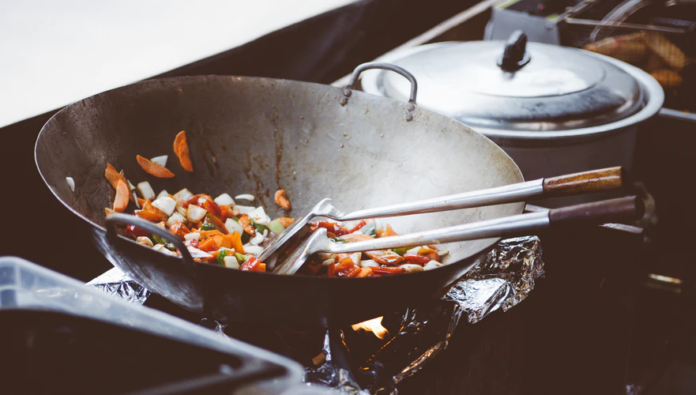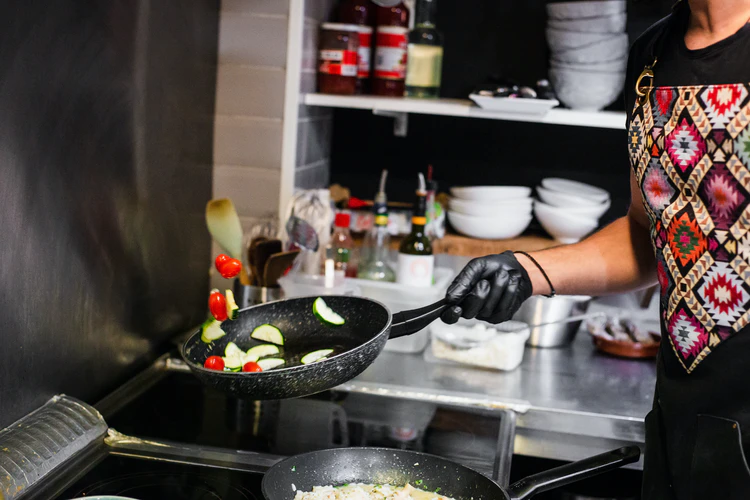Woks are essential items in any cook’s arsenal. With more and more of us cooking at home and looking for new cuisines to try, they have become an increasingly important tool to have. Roughly translating as “cooking pot”, a wok is not restricted to cooking just Chinese cuisine but is used around the world to cook many different things. If you’re new to woks, this article will provide you with all the information you need to know about them.
There are a number of different types of wok you can purchase, each made with different materials. If you have an electric stove or cooker, the best wok for an electric stove will very much be dependent upon your own needs. Here are some things you need to know about woks.
Carbon Steel
Woks made of this type of material are lightweight and easy to hold. This is ideal when transferring food from it to your serving dish if you cannot manage more heavy materials. Carbon steel is similar to cast-iron. It is easy to season to make it into a non-stick wok. Carbon steel woks are also more cost-effective than other materials.
You should never overfill your wok with ingredients because this will lead to uneven cooking. Furthermore, woks require high heat. This is the key to cooking with woks: high heat that’s controlled. If you suddenly leave your wok, mid-cook, to chop an ingredient for use, the chances are that your food will be ruined upon your return to the wok. Therefore, always ensure that you have all your prep work done before you start using a wok and never leave it alone whilst it is cooking on your stove.
You should also consider whether you want helper handles and their material too. If you have metal handles, when exposed to heat they will be hot to touch. This is because they are heat conductors. Therefore consider handles made of wood or bamboo, which do not conduct heat as well. Handles are useful additions for when you want to safely transfer your wok from the hobs, on the top of your cooker, to your oven, or even carry it to a work surface.
Wok Seasoning
It takes approximately 5 minutes to season a wok to give it a nonstick, smooth surface that will not be damaged by scraping. This is an important process and must be done prior to using a wok for the first time.
You heat your wok and put oil in it. Use a cloth to evenly distribute the oil around the inside of the wok. Ensure it remains heated throughout this. Once you have evenly distributed the oil, the seasoning has been completed. Allow the wok to cool down. There should be no need to season the wok again as this should last the wok’s lifetime.
An adequately seasoned wok will have micropores in the metal that will hold oil and food particles, which is good. Your work will use the past flavors in the smoke it produces to communicate with you, informing you it is ready to be used. When the oil is added to it, the pores will close.
The best oils to use have a high smoke point and are low in polyunsaturated fat. So, you’re looking to use oils like peanut oil, groundnut oil, and canola oil, for instance. Using other oils will ruin your cooking and will be a waste of ingredients.
Flat v. Round Bottomed Woks
Both work just as well as each other. However, flat bottomed woks are more suited to stoves that have low heat intensity. This is because they allow the wok to get closer to the heat. Round bottomed woks are more suited to stoves that have ring burners around the heat source. The ring allows for the round-bottomed wok to sit on it, to prevent the wok from sitting directly on the heat.
Accessories
A wok spatula with a very long handle is ideal for use when cooking with a wok, especially when you need to scoop food from its base. Another item worth purchasing is a Chinese ladle. This is different from a western ladle as the bowl at the bottom is at a different angle than the latter, making it more suited for use with a wok. It is good to use when scooping liquid and mixing things like stock or soup. It is also worth getting a scoop with holes in it to drain any liquid you may not want to transfer into your food, like excess oil.
Know your Timings
If you are cooking a dish that has ingredients that cook at different times, cook them separately before incorporating them into one dish. This will prevent items from drying out or being undercooked. For instance, cooking meat in your wok, taking it out, and then cooking vegetables before adding the meat back into the wok to mix the two together will prevent this from occurring.
The Toss
This is a handy technique to learn as it can move food around the wok, ensuring even heat distribution. It is usually used when you want the food to cook quickly.
Holding the hand of your wok, you push the wok away from you. At the same time, you raise the wok, flipping the food towards you.
Just like when tossing pancakes, tossing food in a wok does require a bit of practice, so perhaps consider using a few salads leaves the first few times. This will not only build up your confidence but it would also be much safer and less messy than using hot items and oil.
Woks are versatile and a lot of fun. You are able to cook a wide variety of dishes and will enjoy doing so. You can toss pasta or pancakes in them without fear of spilling over the side. Furthermore, soups and deep frying can be done with them. They are an essential kitchen item for any cook, seasoned or budding. They are also easy to maintain. You truly are restricted by your own limitations. So if you haven’t purchased one, consider starting your search for your first wok, today.



















